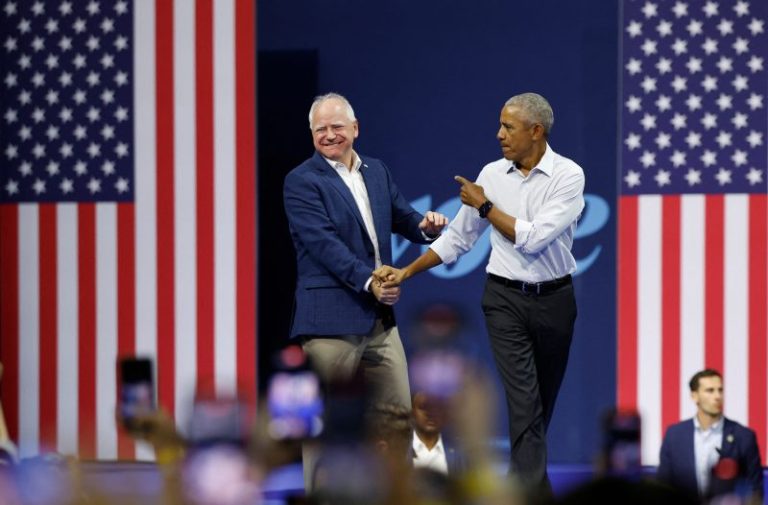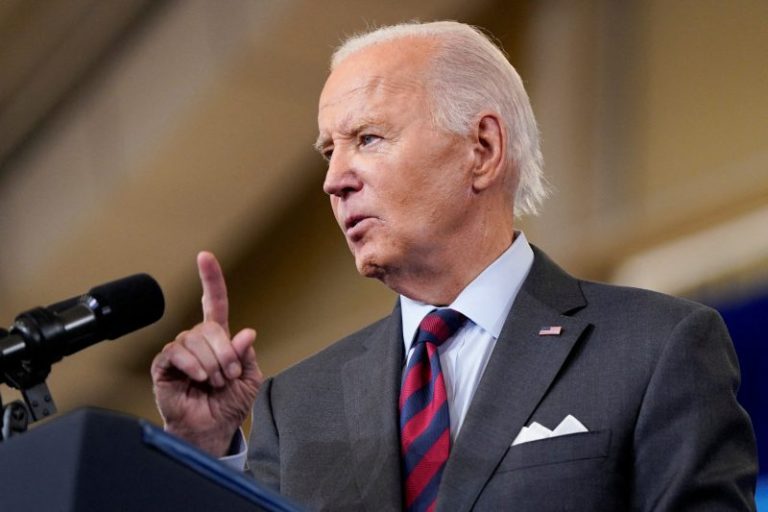MADISON, Wis. — Barack Obama appeared at a rally Tuesday with Democratic vice-presidential nominee Tim Walz, marking the former president’s first event with a member of his party’s ticket since Kamala Harris launched her presidential campaign in July.
Both Obama and Walz, the governor of Minnesota, implored a crowd of thousands in Wisconsin’s capital on the first day of early voting in the battleground state to cast their ballots early.



